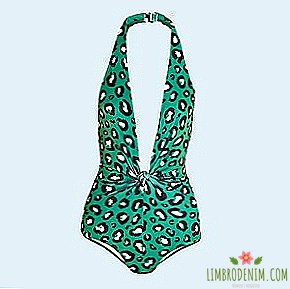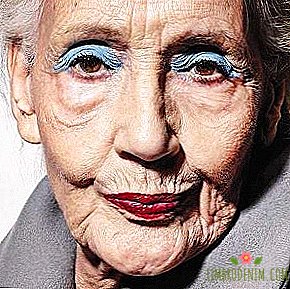Need more iron: How to deal with anemia
When you sleep a little and work hard, fatigue, pallor and dizziness are easily attributed to overwork. However, "innocuous" symptoms can be a sign of serious health problems. According to the latest World Health Organization (WHO) data, about 40% of women worldwide are experiencing iron deficiency anemia, with almost 80% of Russian women experiencing latent iron deficiency.
How to protect yourself from the disease and what to do if the diagnosis is confirmed, we understand together with the experts: the leading expert of the Molecular Diagnostics Center (CMD) of the Central Research Institute of Epidemiology of Rospotrebnadzor Elena Tivanova, the Head Doctor of the Hemotest Laboratory Olga Dekhtyarova and therapist of the Online Doctor service Alena Slepova.

Why women do not have enough iron
Iron deficiency anemia is a condition caused by a lack of iron, which results in a decrease in hemoglobin levels. The disease develops when an important trace element comes in insufficient quantities from food (the body itself does not synthesize iron) or is poorly absorbed, as well as with increased blood loss. Doctor Olga Dekhtyareva notes that all redox processes, oxygen supply of cells and antioxidant protection of the body depend on the level of iron in the blood. Despite the fact that people of different gender and age can face the problem, iron deficiency anemia is considered a "female" pathology, more precisely, a disease of women aged 15-45 years. The reason for this is regular menstruation (especially long or abundant discharge), pregnancy and lactation, when the body needs more iron than usual, as well as childbirth with significant blood loss.
Vegetable or fermented milk diets also contribute to the development of anemia. The fact is that iron is better absorbed from food of animal origin - meat, fish, seafood, and the "milk" is rich in calcium, which prevents the absorption of iron. Violation of the assimilation of this microelement is another reason why it is not used by the body for its intended purpose. In this case, chronic gastritis, for example, can provoke a problem. Olga Dekhtyarev adds that other diseases or their complications can cause iron deficiency in the body. Thus, iron deficiency anemia often develops with gastrointestinal (hemorrhoids, peptic ulcer) and uterine (uterine myoma) bleeding or is associated with chronic diseases: inflammation of the pancreas or duodenum, bronchitis, kidney disease. And some hereditary diseases can interfere with the transportation of iron to organs and tissues. According to doctor Elena Tivanova, sometimes a health problem provokes donation if the frequency of donations is disturbed.
How to understand that there is a problem
Dry skin, cracks in the corners of the mouth (angular stomatitis), brittle hair and nails, shortness of breath, dizziness, decreased performance, and a desire to try chalk and take a deep breath of the smell of fresh paint or gasoline - symptoms indicating a lack of iron in the body. However, they are not enough for a diagnosis. To confirm iron deficiency anemia, you need to pass a general and biochemical blood tests. Hemoglobin is responsible for the circulation of oxygen in the blood. In the case of iron deficiency, its level is usually reduced - less than 115-120 g / l (for women).
At the same time in the early stages of the disease hemoglobin may be normal. According to the therapist Alena Slepova, checking the level of serum iron, as well as transferrin and ferritin, the proteins responsible for the transfer of iron to organs and tissues and creating a supply of trace elements in the body, makes it possible to prevent mistakes in diagnosis. These indicators are markers of anemia at the initial stage - their low level indicates a problem. And in order to find out the cause of the disease, it will be necessary to undergo additional examination - first of all, to check the work of the gastrointestinal tract (with the help of gastroscopy, X-ray of the stomach, colonoscopy) and organs of the reproductive system.

Do I need to eat apples and buckwheat
Experts agree that a balanced diet, including foods high in iron, is the best prevention (but not cure!) Of iron deficiency. Among the champions in the number of valuable trace elements - meat (beef, lamb), fish and seafood, buckwheat, sesame, pumpkin seeds and apples. But Elena Tivanova draws attention to important nuances: iron cannot normally be absorbed with a deficiency of vitamin C and folic acid. Polyphenols and phytates contained in tea, coffee, whole grains and dairy products also inhibit its absorption. For example, buckwheat with milk is a useless option, if the goal is to maintain iron stores in the body.
We recently talked about new WHO data, according to which 40% of women in the world suffer from anemia. The World Health Organization recommends that all women with established menstrual cycles take iron courses for three months a year, at a dose of 30-60 mg per day, for the prevention of anemia. According to some data, the optimal dosing regimen is iron intake every other day, and not daily.
Alena Slepova emphasizes that if anemia has already arisen, then it is impossible to cope with it with the help of one diet: to compensate for the daily need for iron you need to eat about 10 kg of apples or 700 g of buckwheat. It is important to take into account the fact that the longer the product is subjected to heat treatment, the less iron is left in it. Therefore, for the prevention of iron deficiency in women of childbearing age, doctors also recommend not only eating right, but taking supplements with an important trace element.
How to recover
Iron deficiency anemia does not appear in a couple of days (except in cases of acute blood loss) - it develops slowly and leads to chronic oxygen starvation of tissues. Hence, increased fatigue and low performance. Getting rid of anemia by diversifying nutrition with iron-containing foods is a bad idea: a balanced 2000-calorie diet contains only 10 mg of elemental iron, while the required trace element dose in treatment is 100 mg and more. The surest way to solve the problem is to start taking iron supplements. In this case, the type of medicine, dose and method of administration should be prescribed by a doctor.
According to Alena Slepova, the most effective and safe drugs are not in salt form, but in the form of a polymaltose complex of a hydroxide with trivalent iron. They reduce the chance of side effects - metallic taste in the mouth, nausea, vomiting - and reduce the risk of overdose. The doctor reminds that iron is best absorbed in an acidic environment, so its use is recommended to be combined with the use of ascorbic acid. For example, you can drink medicine with a glass of orange or apple juice. It is important not to forget that the absorption of the microelement is impaired while taking certain foods (tea, coffee, milk), and the drugs themselves are incompatible with some drugs: antacids, proton pump inhibitors and others.
Experts agree that stopping therapy immediately after it is better is wrong - you need to complete a full course, which can take 3-6 months. Improvement in general well-being usually occurs 1–1.5 months after the start of treatment. When the hemoglobin level has returned to normal, it is important to compensate for the depleted iron stores in the body (that is, to wait for the normalization of transferrin and ferritin), while continuing to take the medicine. If after a month of treatment hemoglobin remains at the same level, it is very likely that the problem is in the absorption of iron. In this case, additional examination is required.

What else is anemia
In most cases, anemia is not an independent deviation - it accompanies the underlying disease, therefore, treating a disease without establishing its cause is not only meaningless, but also dangerous. Thus, B12-deficient anemia is associated with inadequate intake of vitamin B12 or impaired absorption and is often found in gastric diseases. Elena Tivanova explains that the vitamin is absorbed in the stomach and small intestine, and this ability decreases with age, which is why B12-deficient anemia is often called “elderly anemia”. Interestingly, vitamin B12 can be synthesized by healthy intestinal microflora, but only in limited quantities, and it is not enough for the body's tasks. Anemia can also be caused by a deficiency of folic acid, which, like vitamin B12, is actively involved in the formation of red blood cells.
A large group of diseases - anemia, accompanying chronic diseases. They result from prolonged toxic effects of inflammation products. For example, in chronic renal failure, anemia is one of the characteristic syndromes. According to Elena Tivanova, the mechanism of its development is complex and not fully disclosed, but it is known that one of the main reasons is the reduction of endogenous erythropoietin, a protein that stimulates the production of red blood cells in the bone marrow. Treatment of anemia of chronic diseases is impossible without eliminating the underlying disease, the focus of chronic infection, so taking iron alone will not be enough.
Another group of diseases - hemolytic anemia - is associated with increased destruction of red blood cells, when antibodies against their own red blood cells are produced in the body. The result is one - the massive destruction of red blood cells and, as a result, a decrease in the level of hemoglobin.
Photo:anusorn - stock.adobe.com, domnitsky - stock.adobe.com, spaxiax - stock.adobe.com, andriano_cz - stock.adobe.com





